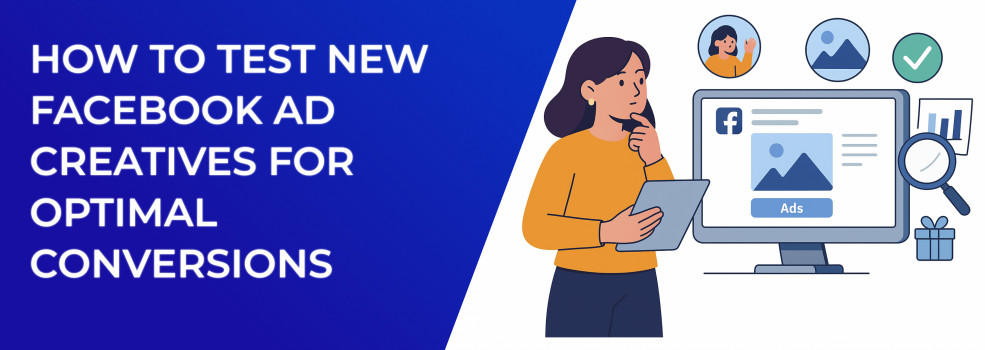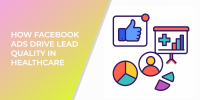Fresh creative can revive a tired campaign, but only when you’re ruthless about testing. Having managed thousands of ad sets over the years, I’ve learned that disciplined experimentation is the single biggest driver of lower costs and higher revenue. Below is a field-tested playbook to squeeze maximum performance from every new concept.
1. Start With a Clear Success Metric
Before you even open Ads Manager, decide how you’ll judge success. Will it be a higher Facebook ads conversion rate, a stronger average click through rate on Facebook ads, or a lower cost of advertising Facebook? Pick one north-star KPI so every test has a pass/fail line.
To set the stage, keep these key metrics handy as you embark on testing:
-
Facebook ad CTR average: benchmark clicks against industry norms.
-
Ad impressions Facebook: ensure each variant reaches enough people for a fair read.
-
Facebook ad metrics such as CPC, CPM and ROAS: confirm the creative is truly profitable, not just flashy.
-
Facebook ads metrics inside your analytics tool of choice: roll up results across campaigns automatically.
A brief recap afterward helps you stay mindful of what truly matters — if a metric doesn’t map to revenue or efficient spend, consider it noise.
Still picking the right goal? Our breakdown of Meta Ad Campaign Objectives Explained shows which objective maps to every common KPI.
2. Develop a Hypothesis Before You Design
Great tests begin with a theory. For example, you might decide, “If we add social proof to the headline, the CTR will climb twenty percent,” or “Bright backgrounds will beat neutral tones for cold audiences.” By writing this down in plain language, you create a north-star that keeps your ads analysis clean and cuts down on wasted budget.
Once you’ve framed the hypothesis, pause to confirm that its outcome will genuinely influence your strategy. If the answer is yes, build only two to four variations that isolate a single change.
3. Build Variations That Matter
The following table summarizes creative levers most likely to move performance. First, remember that every tweak should tie back to your hypothesis; afterward, review the table again to ensure nothing critical was skipped.
If you need inspiration on format possibilities, skim The Ultimate Guide to Facebook Ad Formats first, you’ll spot creative angles you may not have tried yet.
Keep each variation short and punchy. Long copy can work, but it demands a different testing cadence than quick-hit carousel cards. After building, revisit your hypothesis once more to confirm each variation aligns with the core question.
Not sure whether to tweak visuals, copy, or audience first? This deep dive on What to Test First: Creative, Copy or Audience in Facebook Campaigns can help you prioritize.
4. Choose the Right Testing Structure
Facebook gives you several ways to run a fair fight, and your structure determines how quickly you learn as well as how much control you retain.
-
A/B Test in Ads Manager
Perfect for head-to-head creative experiments. Allocate a fixed budget and let Facebook split traffic evenly to prevent the algorithm from “picking favorites” too early. -
Advantage+ Creative with Advantage Campaign Budget
If you trust the algorithm, drop multiple variations into a single ad set with campaign budget optimization turned on. Facebook will push spend to the winner quickly; keep an eye on learning limited Facebook ads warnings. -
Classic ABO (Ad-Set Budget Optimization)
Need tight control? Use individual budgets per ad set. This slows down results but guarantees a statistically pure read.
Whichever route you pick, lock your audiences; a shifting target pool muddies the data and erodes confidence in your findings.
Occasionally Ads Manager warns that an Ad Set May Get Zero; if that happens mid-test, follow the fixes in Why You See “Ad Set May Get Zero” on Facebook and How to Fix It.
5. Run Until You Hit Significance
A common mistake is killing a test after a day or two. Wait until each variant has accumulated roughly 1,500 to 2,000 ad impressions Facebook and at least 100 outbound clicks. Those thresholds generally produce reliable readouts on click rate Facebook ads and front-end conversions.
Most modern reporting platforms can calculate significance automatically, sparing you the spreadsheet work.
Speed matters here — learn how to exit learning faster in How to Finish the Facebook Learning Phase Quickly.
6. Analyze the Data Like a Scientist
When the numbers roll in, look deeper than surface-level winners:
-
CTR spikes but no sales? Your hook excites, but the offer collapses on the landing page.
For a full troubleshooting checklist, see Facebook Ads Not Converting: How to Fix It. -
Great CPM, poor CTR? Your creative blends into the feed. Test bolder visuals.
-
High conversions but expensive CPM? Broaden targeting or revisit campaign budget optimization rules.
If results are ambiguous, rerun the test. Spending a little extra is cheaper than scaling a dud.
7. Optimize, Roll Out, Repeat
Once a creative wins, shift it to your evergreen stack and scale spend. Immediately afterward:
-
Launch FB retargeting ads that echo the winning message.
-
Spin off lookalikes to expand reach.
-
Queue the next hypothesis within 48 hours so momentum never stalls.
Even top performers decline over time, so continuous lightweight testing is the secret to optimising Facebook ads without dramatic budget swings.
Don’t stop after one win — great advertisers test continuously to keep conversions high and costs low.
Watch for creative fatigue as you scale — a quick scan of Ad Fatigue on Facebook: How to Spot It Early and Fix It Fast shows the warning signs.
8. Troubleshooting Common Pitfalls
Every advertiser hits snags, but most issues fall into predictable buckets:
-
Facebook ads not delivering: Check audience overlap and bidding caps.
-
Learning phase Facebook ads stuck? Duplicate the ad set; fresh delivery often resets the clock.
-
Meta ads campaign shows erratic results: Review placement breakdowns; Instagram Stories can skew data.
Knowing where to look lets you solve problems fast and cheaply.
Final Thoughts
Testing new creatives isn’t glamorous, yet it remains the fastest route to ads optimization and higher profits. Treat every experiment as a learning opportunity, stay disciplined, and your Facebook ad performance will climb. Happy experimenting, and may your next variant smash your previous best practices for Facebook ads records!

